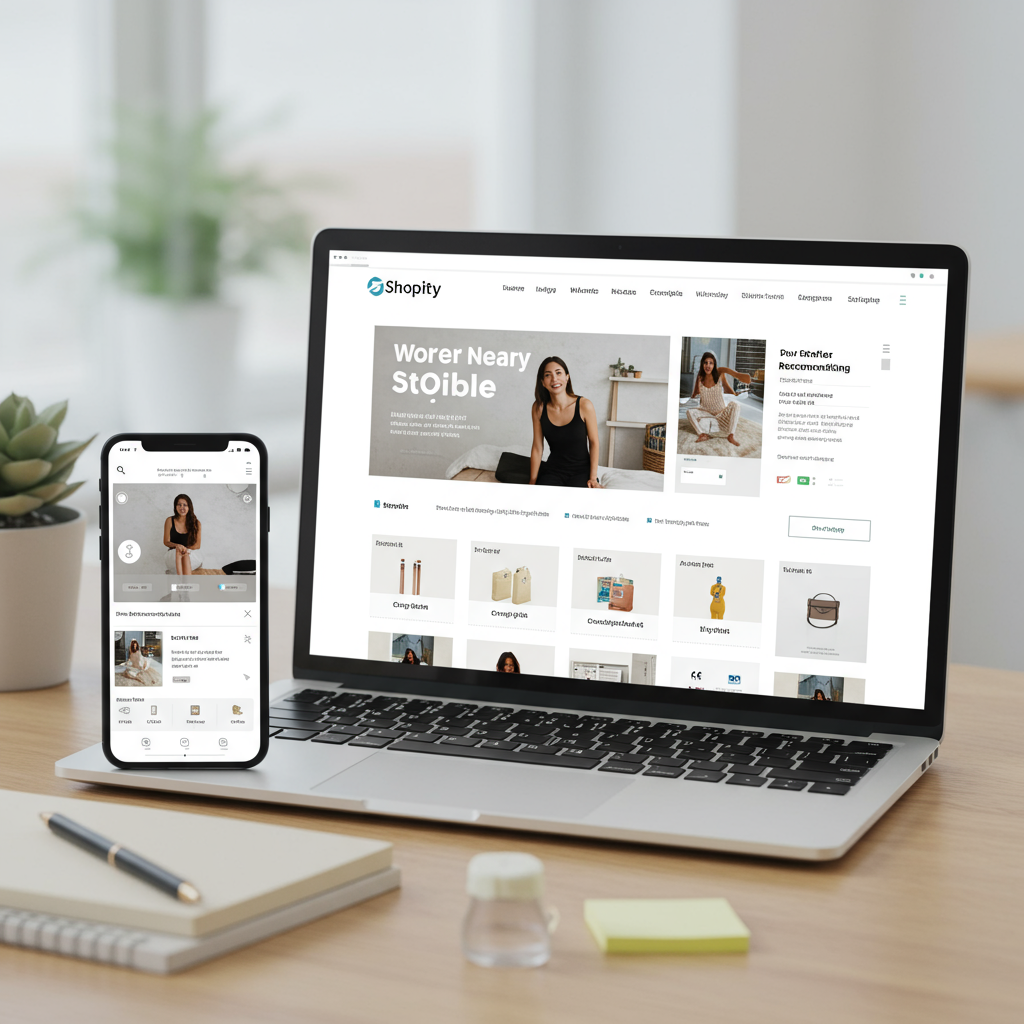Essential Design Strategies for Merchants to Thrive in the Evolving Digital Landscape
Hello fellow merchants! As we look ahead to 2025, the digital landscape continues to evolve at a breathtaking pace, presenting both challenges and incredible opportunities for our Shopify stores.
Your Shopify store’s homepage isn’t just a digital storefront; it’s your brand’s first impression, your virtual handshake with potential customers, and often, the gateway to a sale.
In this article, I want to share some crucial design tips that will help you optimize your Shopify homepage for the coming year, ensuring it’s not just beautiful, but also highly effective in converting visitors into loyal customers.
First and foremost, let’s talk about the evolving customer expectation. Shoppers in 2025 are savvier, more demanding, and have shorter attention spans than ever before.
They expect a seamless, personalized, and engaging experience from the moment they land on your site, reflecting their individual needs and preferences.
One of the biggest trends we’re seeing, and one that will only grow, is the rise of hyper-personalization, often powered by artificial intelligence (AI). Your homepage should dynamically adapt to individual visitor behavior.
This means showcasing products they’ve viewed, recommending items based on their browsing history, or even tailoring promotions to their specific interests and demographics.
Consider integrating apps that leverage AI to offer personalized product recommendations directly on your homepage. This isn’t just a nice-to-have; it’s rapidly becoming a standard expectation for a modern shopping experience.
Next, visual storytelling is paramount. High-quality imagery and compelling video content are no longer optional – they are absolutely essential for capturing attention and conveying your brand’s message.
Your hero section, the first thing visitors see above the fold, should immediately convey your brand’s essence and unique value proposition. Use stunning visuals and a clear, concise headline that resonates.
We’re also seeing an increased adoption of 3D models and Augmented Reality (AR) for product visualization. While not for every product, consider how these technologies could enhance your homepage, especially for high-value items.
Imagine a customer being able to virtually place a piece of furniture in their living room or try on a pair of glasses directly from your homepage – that’s the kind of immersive experience we’re talking about.
Mobile-first design is no longer a suggestion; it’s a non-negotiable mandate. A significant, if not dominant, portion of your traffic will come from mobile devices.
Ensure your homepage loads quickly and looks impeccable on all screen sizes. Test it rigorously on various smartphones and tablets to guarantee a flawless user experience.
Page speed is another critical factor, not just for user experience but also for search engine optimization (SEO). A slow-loading homepage will deter visitors and negatively impact your search rankings.
Optimize your images by compressing them without sacrificing quality, leverage browser caching, and minimize unnecessary scripts to ensure your site loads in under 3 seconds.
Navigation must be intuitive and crystal clear. Visitors should be able to find what they’re looking for within a few clicks, without any confusion or frustration.
Your main menu, search bar, and category links should be prominently displayed and easy to understand. Don’t make your customers think too hard to find what they need.
Incorporate social proof prominently on your homepage. Testimonials, customer reviews, and user-generated content (UGC) build immense trust and credibility with new visitors.
Showcase your best reviews, a feed of customer photos, or even trust badges directly on your homepage. This authenticates your brand and encourages new purchases by demonstrating real satisfaction.
Clear Calls-to-Action (CTAs) are vital. What do you want your visitors to do next? Buttons like “Shop Now,” “Learn More,” “Discover Our Collection,” or “Get Your Free Quote” – make these stand out.
Don’t overwhelm your homepage with too many competing CTAs; prioritize the most important actions you want users to take to guide them effectively through their journey.
Think about accessibility. Your homepage should be usable by everyone, including those with disabilities. This is not just good practice; it’s a legal and ethical imperative.
This means using appropriate color contrast, providing descriptive alt text for all images, and ensuring keyboard navigation is possible for those who cannot use a mouse.
Finally, consider integrating a blog or a “latest news” section directly on your homepage. This not only provides fresh content for SEO but also positions you as an authority in your niche.
Regularly update this section with valuable content that resonates with your target audience, offering insights, tips, or behind-the-scenes glimpses of your brand.
Your homepage should also clearly link to essential information like your “About Us” page, “Contact Us,” “FAQ,” and “Shipping & Returns” policies. Transparency builds trust and reduces customer service inquiries.
Remember, your homepage is a living entity. It’s not a “set it and forget it” situation. The digital world is constantly changing, and your site should evolve with it.
Continuously monitor its performance using analytics tools, conduct A/B tests on different elements (like headlines or button colors), and actively gather feedback from your customers.
Adapt and evolve based on data and changing market trends. The goal is continuous improvement, always striving to make your homepage more effective and user-friendly.
I truly believe that by focusing on these areas – personalization, visual appeal, speed, mobile optimization, clear navigation, social proof, and continuous improvement – you can create a Shopify homepage that not only looks fantastic but also converts visitors into loyal, repeat customers.
What do you think about these tips? Are there any other strategies you’ve found particularly effective for your Shopify store’s homepage design? I’d love to hear your thoughts and experiences!






